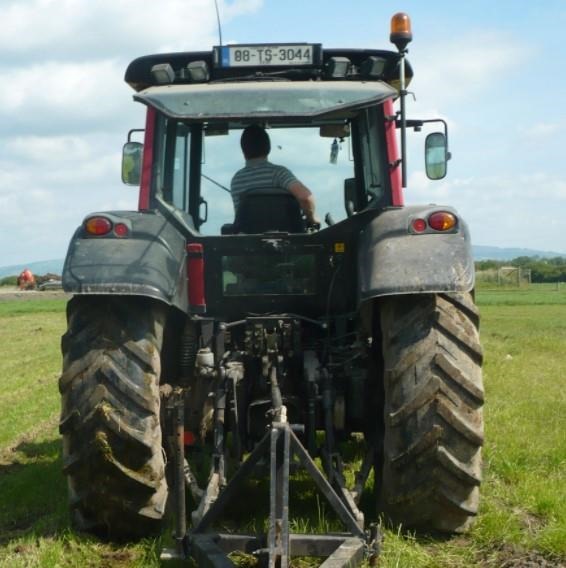Mole drains are a low-cost practice to improve the soil physical property and drainage performance. Moling is very suitable in heavy clay soil with a minimum of 45% clay content and less than 20% sand at the mole depth.
What are mole drains?
Mole drains are unlined tunnels (mole channels) in the clay subsoil formed by a mole plow. A mole plow is composed of a shank (leg) attached to a cylindrical bullet followed by a cylindrical expander. The process of pulling the mole plow results in soil cracks.
 A mole plow is composed of a shank (leg) attached to a cylindrical bullet followed by a cylindrical expander. Photo by Patrick Tuohy.
A mole plow is composed of a shank (leg) attached to a cylindrical bullet followed by a cylindrical expander. Photo by Patrick Tuohy.
Why install mole drains?
The following are reasons why you may need to install mole drains:
- In soil where surface drainage is insufficient for addressing excess water problems and installing subsurface (tile) drainage is uneconomical due to low crop income, mole drains are an inexpensive means to drain excess water from the soil profile. An example location is the Upper Peninsula of Michigan.
- In heavy clay soil with low permeability, mole drains can drain excess water from the soil profile. Mole drains can be combined with subsurface drainage to improve drainage performance in heavy clay soil.
 A tractor pulling a mole plow. The shank (leg) creates a blade cut to break up the clay pan or compacted layer to improve infiltration. Photo by Patrick Tuohy.
A tractor pulling a mole plow. The shank (leg) creates a blade cut to break up the clay pan or compacted layer to improve infiltration. Photo by Patrick Tuohy.Benefits of mole drains
The primary benefit of mole drains is its low cost. Other benefits are improved soil physical properties and increased crop yield in heavy clay soil. When properly installed, mole drains create soil cracks that increase soil aeration, increase infiltration and facilitate water movement toward the mole channels.
According to Michigan State University Extension, mole drains should not be considered as merely a cheap version of subsurface drainage, but as a soil-and-drainage-improvement practice.
Source : msu.edu